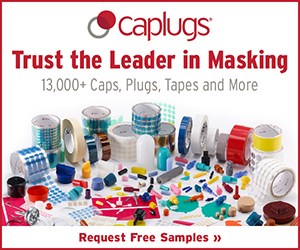What's the Best Coating Method for Extended Outdoor Performance?
For long-lasting powder coating that holds up outdoors, consultant Rodger Talbert suggests pretreatment and washing options, a primer layer and a top coat.
Q: We are a manufacturer of indoor furniture and we are currently planning to add an outdoor line to our offerings. This will include cast iron, steel fabrications and aluminum chairs and tables. What is the best way to powder coat the metal furniture to achieve high performance and longevity from the coating?
A: Outdoor performance brings a variety of elements into play that break down a coating. Sun, wind, rain and temperature can take a toll on even the toughest coatings. Before you select a coating, you need to decide how high you want to reach. The levels of performance can range from modest expectations to extremely high standards. As performance increases, so do process needs and cost.
Also, you need to know that outdoor performance is affected by the method used to prepare the metal and the metal substrate material as well as exactly how the product is manufactured. There are a lot of decisions to make so I will try to share some general guidelines to help you understand the options.
Pretreatment could be as simple as a cleaning and iron phosphate process. This will give you a good, clean surface and good powder adhesion to the substrate. It does not add any appreciable gain in corrosion resistance if the coating is damaged and moisture gets through to the substrate. To add corrosion resistance to the substrate, you will need to add a more robust conversion coating, such as zirconium oxide, zinc phosphate or chrome/non-chrome treatment. Zinc phosphate enhances steel substrates, but it also adds a lot of demands on the process side and complicates environmental responsibilities. Chrome is still used for aluminum, but it has been largely replaced by high-performing zirconium products or non-chrome conversion coatings for aluminum. The decision on what to use relates to the substrates being coated and how reliant you want to be on the pretreatment for corrosion protection.
Another way to enhance corrosion protection is the use of a high-quality primer. Powder primer can contain zinc for added protection, but even a standard epoxy primer will elevate performance a lot. Zinc-containing primers work best on blasted steel because the zinc makes better contact with the steel and therefore provides better cathodic reaction for corrosion protection. For smooth surfaces that are not blasted, the zinc has less benefit.
A primer layer offers more benefits than may be obvious: it adds to thickness for better moisture resistance and mechanical performance, it rounds out the edges for better coverage and protection against corrosion in these critical areas and it helps to fill areas that might be missed with a single coat.
With your variety of substrates and desire for long finish life, you will need to consider some alternative options. For wrought iron and steel fabrication with welds, you should consider blasting. Use a pressure blast for manual preparation or, if the volume is high and you have the capital, an inline-wheel blast system. Avoid blasting with steel shot or grit as it can leave behind ferrous iron and cause rust. Use garnet, aluminum oxide or something else. Wheel-blast systems may limit your media options because the media is hard on the blast system, so an aggressive media may wear the equipment out too fast.
You should also consider a washer for cleaning and application of a conversion coating. Zirconium oxide or similar transitional metal processes should be a good selection for a wide variety of metals. Having the options to blast or wash will give you a good start on the process.
Install a booth and an oven for primer. The primer-coat is applied and gelled (partially cured) and then the topcoat is applied. The two coats are finally cured in a second oven.
The options I suggest are based on your desire to achieve a high-quality product. You can compromise if you choose to have different-quality offerings or think the cost will be too high for your market. But if you are looking for quality and flexibility, this is the best set of options
Related Content
Outgassing and Powder Coating Defects
Having trouble with bubbles forming during curing? Verney Denerville of TIGER Drylac discusses proper outgassing procedures.
Read MoreAdjusting Current and Voltage When Powder Coating
Which manual powder coating gun setting is better to adjust, voltage or current? Jeff Hale of Gema USA discusses when to use different settings on your powder gun to achieve optimal results.
Read MoreHow to Choose the Right Coating for Fasteners
Choosing the proper coating for fasteners can help with performance by improving durability and lifespan. In this helpful Ask the Expert article, Mark Schario of Columbia Chemical offers advice for choosing the right fastener coatings.
Read MoreTop Reasons to Switch to a Better Cleaning Fluid
Venesia Hurtubise from MicroCare says switching to the new modern cleaning fluids will have a positive impact on your cleaning process.
Read MoreRead Next
Powder Coating 4.0: Smarter, Faster, More Efficient and Connected
New tools reduce cost and waste, lower manufacturing footprint of powder coating operations.
Read MoreEpisode 42: An Interview with Robin Deal, Hubbard-Hall
Hubbard-Hall wastewater treatment specialist Robin Deal discusses the latest trends in wastewater management.
Read More
























